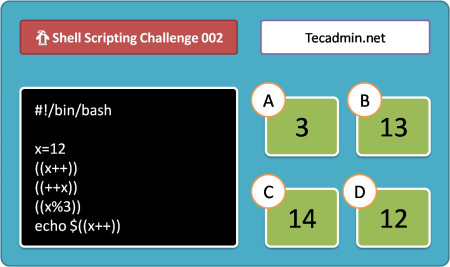Shell scripting is a powerful tool for automating tasks in Linux and Unix-like systems. It allows users to create scripts that can simplify repetitive tasks or perform complex operations. One such operation is an infinite loop, which can be useful in various scenarios, such as waiting for a specific event, continuously monitoring system resources, or repeatedly executing a command. This article will discuss how to create infinite loops using ‘for’ and ‘while’ constructs in shell scripting, along with practical examples.
1. Creating an Infinite Loop Using the ‘while’ Construct
The ‘while’ construct is one of the most straightforward ways to create an infinite loop in a shell script. The basic syntax is as follows:
1 2 3 4 | while [condition] do commands done |
To create an infinite loop, you need to provide a condition that always evaluates to true. Here’s an example:
1 2 3 4 5 6 | #!/bin/bash while true do echo "This is an infinite loop" sleep 1 done |
In this example, the echo command will run indefinitely, displaying “This is an infinite loop” every second. The sleep 1 command is added to pause the loop for a second before the next iteration, preventing excessive resource consumption.
2. Creating an Infinite Loop Using the ‘for’ Construct
The ‘for’ construct is another way to create an infinite loop in shell scripts. The basic syntax is as follows:
1 2 3 4 | for ((initialization; condition; increment)) do commands done |
To create an infinite loop with a ‘for’ construct, you can use the following example:
1 2 3 4 5 6 | #!/bin/bash for (( ; ; )) do echo "This is an infinite loop" sleep 1 done |
This script omits the initialization, condition, and increment parts of the ‘for’ loop, causing it to run indefinitely. As with the ‘while’ example, the sleep 1 command is added to avoid excessive resource consumption.
3. Real-World Examples
3.1. Monitoring System Resources
You can use an infinite loop to continuously monitor system resources like CPU and memory usage. For example:
1 2 3 4 5 6 7 | #!/bin/bash while true do echo "Current CPU and memory usage:" top -b -n 1 | head -n 5 sleep 5 done |
This script will run the top command every 5 seconds, displaying the current CPU and memory usage.
3.2. Continuously Checking for File Changes
An infinite loop can be used to monitor a specific file or directory for changes. This can be helpful when you need to trigger an action whenever a file is modified:
1 2 3 4 5 6 7 8 9 10 11 12 13 14 | #!/bin/bash file_path="/path/to/your/file.txt" previous_checksum=$(md5sum "$file_path") while true do current_checksum=$(md5sum "$file_path") if [ "$previous_checksum" != "$current_checksum" ] then echo "File has been modified" previous_checksum="$current_checksum" fi sleep 5 done |
This script calculates the MD5 checksum of the specified file and continuously monitors it for changes every 5 seconds.
Conclusion
Infinite loops can be valuable in various scenarios, such as continuously monitoring system resources, waiting for specific events, or repeatedly executing a command. Shell scripts provide an efficient way to create infinite loops using ‘while’ and ‘for’ constructs. Always remember to include a delay, like sleep, to prevent excessive resource consumption during the loop execution.
